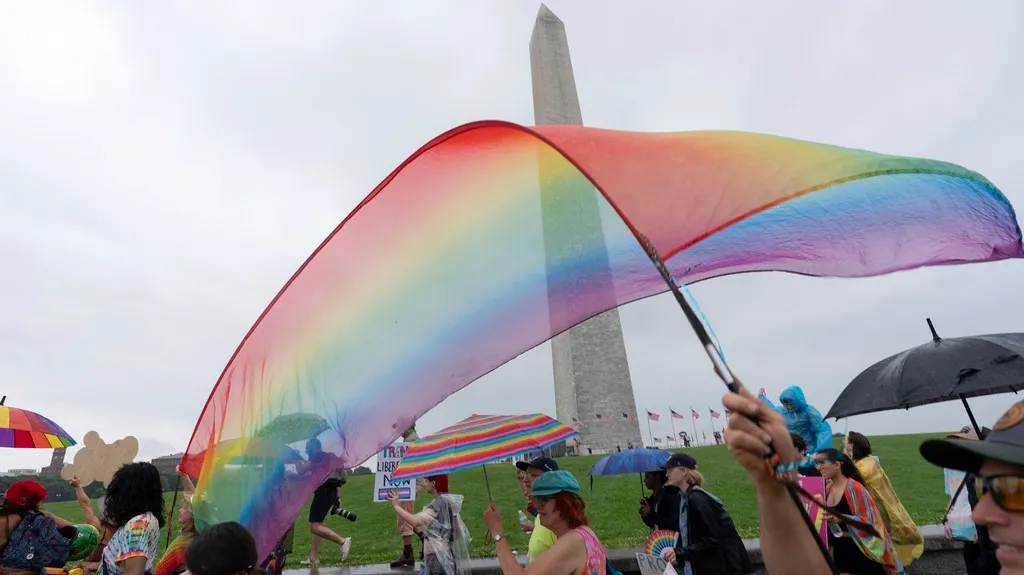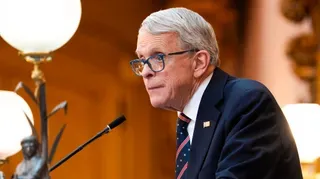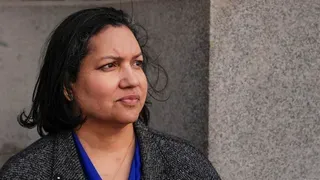February 14, 2011
Prominent U.S. Gay Rights Academic Bashed in Brazil
Steve Weinstein READ TIME: 6 MIN.
Mark Blasius has spent his entire professional and personal career fighting in the classroom and outside of it for LGBT rights. He spent a long and illustrious academic career in the City University of New York system, where he became a full professor with a specialty in gay politics.
He has authored three books, including the highly influential textbook We Are Everywhere, the most complete compendium of key primary sources in same-sex gender-identity politics. He has written innumerable papers and has flown around the world to do presentations in conferences.
Along the way, he has helped fledgling and struggling local LGBT groups get their footing. Now a professor emeritus, it was just such a conference that took him to Sao Paulo, Brazil's largest city, in early December of 2010. He was a presenter at the International Lesbian & Gay Organization World Conference at the behest of the Internatnational Resource Network.
It was there that he got a first-hand look at the kinds of issues the vast majority of gay men, lesbians and transpersons face every day in most of the world.
Make that a fist-hand look. Blasius was beaten by a man on the street, apparently because he was gay.
Blasius was staying at a hotel that is part of a large Brazilian chain. Two days before the incident, he was working with the collaborators on his presentation. The night of the second day, a local guide from the conference escorted a group of attendees from the hotel to Sao Paulo's major gay neighborhood, a 10-minute walk from the hotel, to grab a bite and take in the local color.
The guide, a volunteer, "told us this wasn't a dangerous area," he recalled back in his apartment in the Chelsea neighborhood of New York City. At a certain point, he and his two cohorts -- a man and a woman -- decided to go a dance club, where they hung out until 2 a.m.
The other two were staying in hotels in the opposite direction. "I had asked the guide if it was safe to walk alone at night," Blasius recalls. "I asked if I should take a taxi. He said, 'No, no, it's too close. The taxi driver won't take you directly there.'"
Since Blasius doesn't speak Portuguese, he thought it would be best to hoof it back. A few minutes after starting out, he was out of the gay area. This is how he describes what happened next: "A man in the street started screaming at me in Portuguese. This was a wide boulevard with a divider in the middle, no cars out. After the first block, I heard him still screaming. He was following me.
"He looked as though he was talking to people who were hanging out on the street. I started walking down the middle of the boulevard. I turned to street hotel was on, half a block away. There were police kiosks around (empty). Just before I got to the hotel entrance, the guy jumped me, I got up. I started screaming 'Help help!' At that point, he smashed his fist across my face and then ran away.
"I went into the hotel entrance; the security guy was right inside the front door. I tried to explain. Nobody there spoke English. They saw the bleeding. I wanted ice cubes to restrict the swelling. I sat in the blood. I started crying. I never thought this would happen. I asked them to call the police. Four came; none spoke English. They refused to make a report."
Blasius, who is in his 60s, went to meet his colleagues in the hotel restaurant the next day. When he got to the entrance, he fainted. He awoke in the hospital emergency room, where his wound was dressed, and returned to the conference.
Blasius has only praise for the other attendees and his Portuguese hosts. Hundreds of activists from around the world were there, and every day, dozens of people asked him how he was doing.
"They congratulated me for staying to remind us of what we're fighting against," he said.
The organizers were understandably very embarrassed. It was passed word to word that there had been trouble in the city with some skinheads attacking gay men. Blasius notes that the man who attacked him made no attempt to grab his wallet even when he was lying down.
The nation a mixed bag for LGBT Brazilians
Blasius' incident points up the contradictory messages sent out by the enormous nation state that dominates Latin America.
On paper, Brazil is relatively advanced when it comes to LGBT rights. Same-sex sexual activity was legalized here well in 1830 --�well over 100 years before Europe and the U.S. did so. Young Brazilians probably come out at a much higher rate than in any other developing country.
By some estimates, 20 percent of men in Rio de Janeiro are gay. It can certainly seem that way to U.S. tourists, who are excused if they have the (not-unpleasant) feeling they are in the middle of a Bel Ami (the international gay porn producer) set. And those gay tourists are highly valued by the populace.
There are several protections for LGBT Brazilians built into their legal structure --�a good deal more, in fact, than in ours. States cannot discriminate (so much for "defense of marriage acts").
But the tradition of machismo dies hard, and despite the wide embrace of transsexual performers and the overtly homoerotic content of much of Carnival, there remains a great deal of homophobia at the street level.
As international gay-rights activist Doug Ireland reported in New York's Gay City News, Grupo Gay de Bahia, a local gay-rights organization, has estimated that there were at least 250 gay-related murders in 2010. Between 1980 and 2009, at least 3,100 gay men (and lesbians) were murdered because of their sexual orientation. Unfortunately, street crime, murder and official murder (the police have been accused of running rampant in the slums of Rio and Sao Paulo) are far from unknown in Brazil, where kidnapping has become so much a way of life it was even the subject of a Simpsons episode.
The founder of Gay de Bahia, Luiz Mott, told local magazine Terra that the reported gay-related murders are only the tip of the iceberg. "Brazil is the world leader in the deaths of its LGBT population," he said flatly. ""A whole cultural and institutional homophobia [that still] exists and has, in evangelical churches and Catholic churches, the great manufacturing centers for such ideological weapons."
And what of Sao Paulo? The country's business capital, the city is well known for having the largest Gay Pride march in the world. NoiZe Magazine recently published a city guide article by a local, in which he enthused, "Paulistanos (as the locals are called in Portuguese) can appear rather formal at first, but they'll melt your heart if you show them some consideration and win their confidence." However, he added, "Just remain sensible and aware: Don't go out dressed like a typical tourist or display your state-of-the-art BlackBerry, cell phone or iPod."
Back in Chelsea, a bit more caution
Now back in New York, Blasius has recovered from his physical wounds. But the psychical ones remain.
Chelsea is perhaps New York's best-known gay neighborhood, an affluent area marked by dozens of gay bars, restaurants, shops, gyms and service organizations. But even here, Blasius feels ... different.
One day, he was walking down a local street holding hands with his partner and some men started yelling from their car and throwing beer bottles. There have been a few notable homophobic incidents in the neighborhood of late as well.
For several weeks after returning from Brazil, he had recurring nightmares. They subsided, but the whole experience brought home to him the reality of why he had attended that conference in the first place.
"What I learned from this is that even though I live in a gay enclave, if there's somebody form out of town visiting for a conference, I'm not going to say you can walk around Chelsea, you can walk around any time of the night and feel safe because it's a gay neighborhood," Blasius said. "It drives home that, no matter what your skin color, your wealth, your neighborhood, you're still subject to hatred and even physical violence."
Steve Weinstein has been a regular correspondent for the International Herald Tribune, the Advocate, the Village Voice and Out. He has been covering the AIDS crisis since the early '80s, when he began his career. He is the author of "The Q Guide to Fire Island" (Alyson, 2007).






